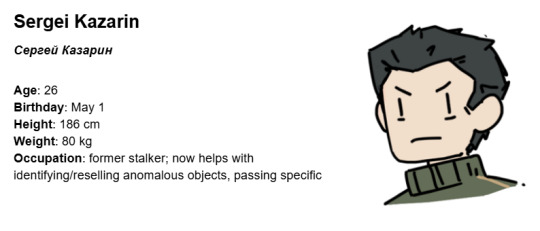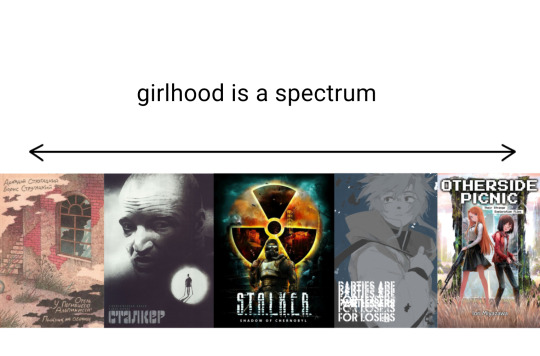#Besides a hidden line that doesn't have impact on the main story and may not even be triggerable without mods
Explore tagged Tumblr posts
Text
SonKnux interactions vs S0nAmy interactions in Frontiers pretty much


#THIS IS A JOKE#Idk Sonic and Knuckles had way more chemistry in that game#THE WAY THEY WERE LOOKING AT EACHOTHER#meanwhile sonic and amy were just meh?#Besides a hidden line that doesn't have impact on the main story and may not even be triggerable without mods#their interactions just felt so flat#sonic memes#sonic meme#dumb stuff#sth#sonic#amy rose#sonic the hedgehog#knuckles the echidna#sonic series#sonic frontiers#sonic shitpost#sonic shipping#s0namy#sonknuckles#sonknux#sonic and knuckles#sonic games#shitposts#sonic x knuckles#knuckles
350 notes
·
View notes
Text
Yes, I know PAFL has comics too (not just "Rough", but also "Execution" on Itch.io). I'm not ignorant — I omitted it for brevity. If I had to discuss every aspect of PAFL, we'd be here all day.
- "google doc is quite laconic and tells the facts about what is happening right away"
- Exactly, that's why it's boring. There's a clear difference between "telling a story" and "giving a summary of events". The Strugatskys tell a story. Ferry tries to tell a story (with MVs), fails, and then has to explain to the audience what the story was supposed to be. That's the difference.
Roadside Picnic doesn't contain lines like:
"The book is split into 4 chapters. Chapter 3 switches perspective to Richard Noonan."
because you understand that by simply reading. Ferry, on the other hand, does write things like:
"The video can be split into two parts. The 'present' part takes place around 2 weeks after the incident. [...]"
She has to write it, because half the the audience won't pick up on it from watching the videos.
And the doc does undeniably contain tons of unnecessary detail, like the characters' birthdays, height and weight:

Do you think Roadside Picnic would've been a better story if we knew each character's birthday, height, weight, and favorite brand of toothbrush? Cause I'm glad this kind of guff was omitted, and only relevant information was kept.
- "besides not everything can be shown in a 3 minute music video"
- Nobody held Ferry at gunpoint and forced her to tell her story through a series of music videos. That was her choice of medium, and it was a bad one — it clearly wasn't a good fit for the kind of complex, serialized plot she was trying to tell. If it had been a good fit, she wouldn't have felt the need to explain herself in a separate document. The work would have spoken for itself, no clarifications needed. (I'm glad she eventually went on to write comics; that's probably a much better medium for this.)
Even so, there are MANY obvious things that could've been done to improve clarity. For example:
The MVs could've been in chronological order, instead of jumping around the timeline with a random arrangement of prequels and sequels-to-prequels (with flashbacks spliced into them, for good measure).
The characters could have had more distinct faces, so when they're rendered in monochrome or shown as younger versions in flashbacks, they'd be easier to identify.
Some of the more abstract imagery could've been toned down.
Some videos (most notably, the middle section of "The Mill") contain uninterrupted scenes of character dialogue. Why not use these kinds of scenes as intros and/or outros for the songs, which would help set the scene and orient the audience? (This is not uncommon - many music videos have non-musical intros which establish some sort of story.)
These aren't perfect solutions, but they show that PAFL isn't confusing solely because of some "inherent limitation" of music videos. No, Ferry deliberately made the story far more convoluted than it needed to be.
- "besides pafl is like one person's project. who doesn't even do it like. full-time"
- Fair enough. I never said that PAFL wasn't an impressive technical achievement, especially for a solo artist doing it as a hobby. I'm deeply envious of Ferry's skills.
But, and this goes without saying, the fact that it's a solo project has zero impact on what a critic can or cannot say about the quality of its writing, presentation, editing, etc. If it's bad, it's bad. I don't care if it was written by one person or an entire team of writers. This point is a cheap deflection.
- "pafl does have lots of social commentary on the way life in cis countries is"
- To be honest, I'm sure there is some kind of valid social commentary hidden in there somewhere — I'm not very good at interpreting media that is already trying my patience, so a lot of stuff goes over my head.
That said, whatever social commentary it may have, it is VERY difficult to take seriously when the main plot involves a shady institute experimenting on (and eventually planning to execute) children, with the research being headed by a Dr. Temnova (roughly Russian for "Dr. Dark"). This does not scream "well thought-out social commentary". It screams "we are the obvious bad guys™ from a Saturday morning cartoon".
Roadside Picnic does have a lot of very blunt, unsubtle critiques of, say, the police. But it didn't need to name one of its policemen Sgt. Svinyovich to get that point across. (To be fair, R.P. does feature other lazy, downright offensive characters names, like Gutalin, but that's a whole different story).
Anyway, idk, conclusion, summary, TL;DR:
I think my main issue with most "Roadside Picnic inspired" media is less with specific plot points or characters (which may very well work in their own, isolated context), but more the slow, wishy-washy style of presentation (confusing MVs, long-winded light novel series), the lack of harshness in themes and tone (IMO the zone should not give you superpowers), and the shift to a strong visual focus, leading to the zone being treated as an aesthetic.
The thing that best shows this difference, IMO, is comparing their worldbuilding. In Roadside Picnic, the town of Harmont is basically its own character. It has history, infrastructure, politics - we see it evolve and develop throughout the chapters. Before the visitation, it used to be an industrial factory town. After the visitation, it shifted to a service economy, fueled by immigrant labor and tourism. Stalkers were initially a popular profession, but as the supply of artefacts dried up and technology advanced, they were gradually replaced by remote-controlled robots. Throughout the novel, we repeatedly hear about new construction projects, workers protesting for better wages, disgruntled ex-stalkers becoming taxi drivers, etc.
What is the town in PAFL even called? According to Ferry's doc, it's "an Eastern European city". That's it, it doesn't even get a name. It has the research facility, some factories... a club, I guess. That's a start, maybe, but where's the flavor? The texture? Does it exist as anything more than a flat backdrop for whatever dramatic pose the main characters are striking?
Idk, it's 4AM and I'm losing coherence. Maybe I can't explain it with words, but to me, the priorities of these derivative works feel all wrong. They're too visual, too stylish, full of dramatic scenes and camera angles... it's so much, when Roadside Picnic excelled at working with so little (it's almost novella-length). It created a grimy, awkward world which was complicated and alive, and did so simply, clearly, without all this flashiness or pizzazz. No X-men styled superpowers, no shootouts. No guff: no character birthdays, heights and weights... It was just plain, good sci-fi.

(it’s not for nothing that the zone is addressed as a woman)
that's kinda specific meme I made for myself and one and a half people who are as insane as me to understand da meme
748 notes
·
View notes